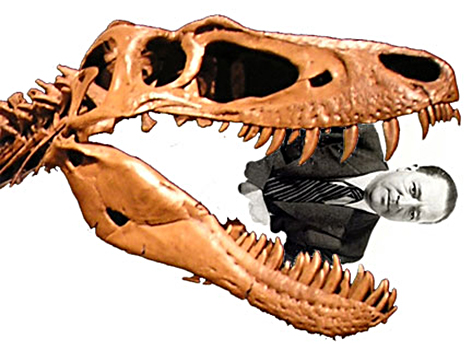5 tips to prevent IT extinction


Here are 5 tips to help IT avoid extinction.
I pose this question to IT departments everywhere: "Is your department evolving upwards or fading away on a seemingly-inevitable tide of outsourcing?" If the latter, I suggest you study these points carefully.
1. Recognize and embrace change. Survival depends on our ability to adapt, rather than swim against the tide of economic and social forces over which we have no control.
ZDNet blogger and fellow Enterprise Irregular, Dennis Howlett, describes the human and organizational dimensions of IT-related change:
What we’re seeing is the wholly human problem of an organization that has been variously called upon to deliver ‘value’ from an evolving IT landscape that once placed emphasis on control but which now demands productive innovation. Both demand very different ways of working, require different disciplines and absolutely require change.
Blogger Kate Carruthers is more concrete in her analysis:
I reckon that IT is diverging into two separate streams - firstly mission critical systems, that must be highly reliable and resilient. Secondly non-critical systems that are being democratized. I don't think any of us want to use medical or financial systems that are user generated, not tested and not highly secure and fault tolerant? But for other business systems I see socialprise as taking over.
So we see the divergence. Where high levels of reliability, redundancy and resilience are required IT departments & engineers are critical. But for the rest roll on the revolution!
Whether one agrees with Kate's view is beside the point: IT must acknowledge, rather than fight, change.
2. Focus on customers with dedication and intensity. Great customer service requires empathy, experience, and a real desire to serve. Unfortunately, merely being "nice" is sometimes confused with adding customer value, a far loftier goal.
Commenter mlaudisa described his organizational mandate:
[From the previous extinction post:] IT leadership is alienated from senior management.
That would be "POOR IT leadership"... I'm a CIO and I don't speak to my boss the CEO in technical jargon, but ultimately I'm paid to manage technology, so I better understand my portfolio and be able to translate its relevance & risks to the business.
The commenter understands his value to the enterprise; that's the basis underlying excellent customer service.
3. Add value through innovation. Despite appearances to the contrary, IT is not doomed to be slave of commodity economics.
Enterprise Irregular and EDS fellow, Charlie Bess, pointedly describes the risk:
[T]hose IT organizations not focused on delivering ever increasing business value ("caretakers") and actively making decisions about their future will be extinct, since someone will step in and make decision for them or their company.
Blogger Kelly Shaw transforms commodity thinking into high-level IT value:
If all a company needs is vanilla IT, then it doesn’t make sense to maintain an internal IT organization. If all you need is standard power, would you bother generating your own, or would you buy it from the grid? In some cases, however, innovative IT is a strategic weapon, not merely a defensive necessity.
4. Improve communication. IT must communicate its value, pressures, and constraints in straightforward business terms rather than in technical, mumbo jumbo.
Marketer David Politis says:
[J]argon in any form between any technical person and a non-technical person is communications death.
UNLESS (of course) the technical person KNOWS for an absolute certainty that the non-technical person understands the basic, underlying concepts/premises of the matter being discussed. The problem is that such certainty is very, very difficult to attain. Hence, in almost all instances, IT does lose credibility by speaking in technical jargon.
Enterprise Irregular and blogger, Vinnie Mirchandani, expresses IT's perspective in straightforward, eloquent language:
[T]he CIO or IT is not the enemy. Just a bunch of folks trying to juggle a wide range of competing technology initiatives."
5. Lose the arrogance. Condescending attitudes toward the business destroy IT's credibility in the enterprise, making IT weak and vulnerable.
A blog called It Ought to be Simple says it well:
If IT’s condescending attitude resulted in nothing more than a few hurt feelings, it wouldn’t be such an issue. But the attitude causes much bigger problems: It gives IT a free pass, the right to blame mistakes on users…who are, after all, too stupid to know what they’re doing.
Here's what a CNET blog commenter said:
Users are stupid and that needs to be the starting point...for software developers
Such nonsense undermines IT and only hastens its path toward extinction.